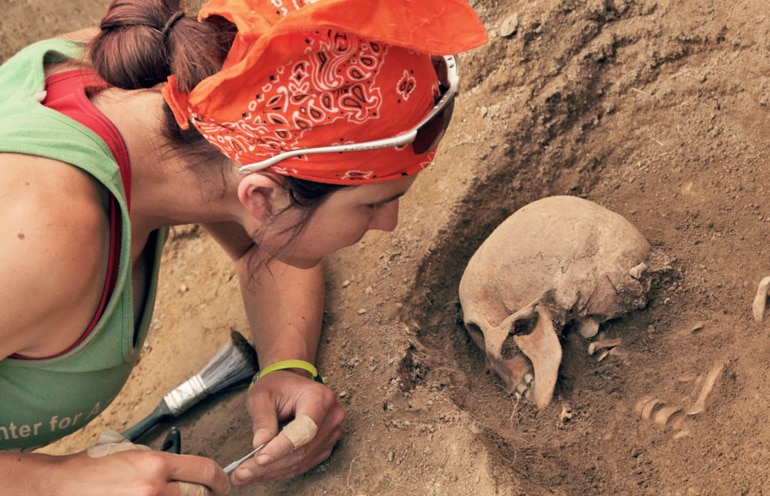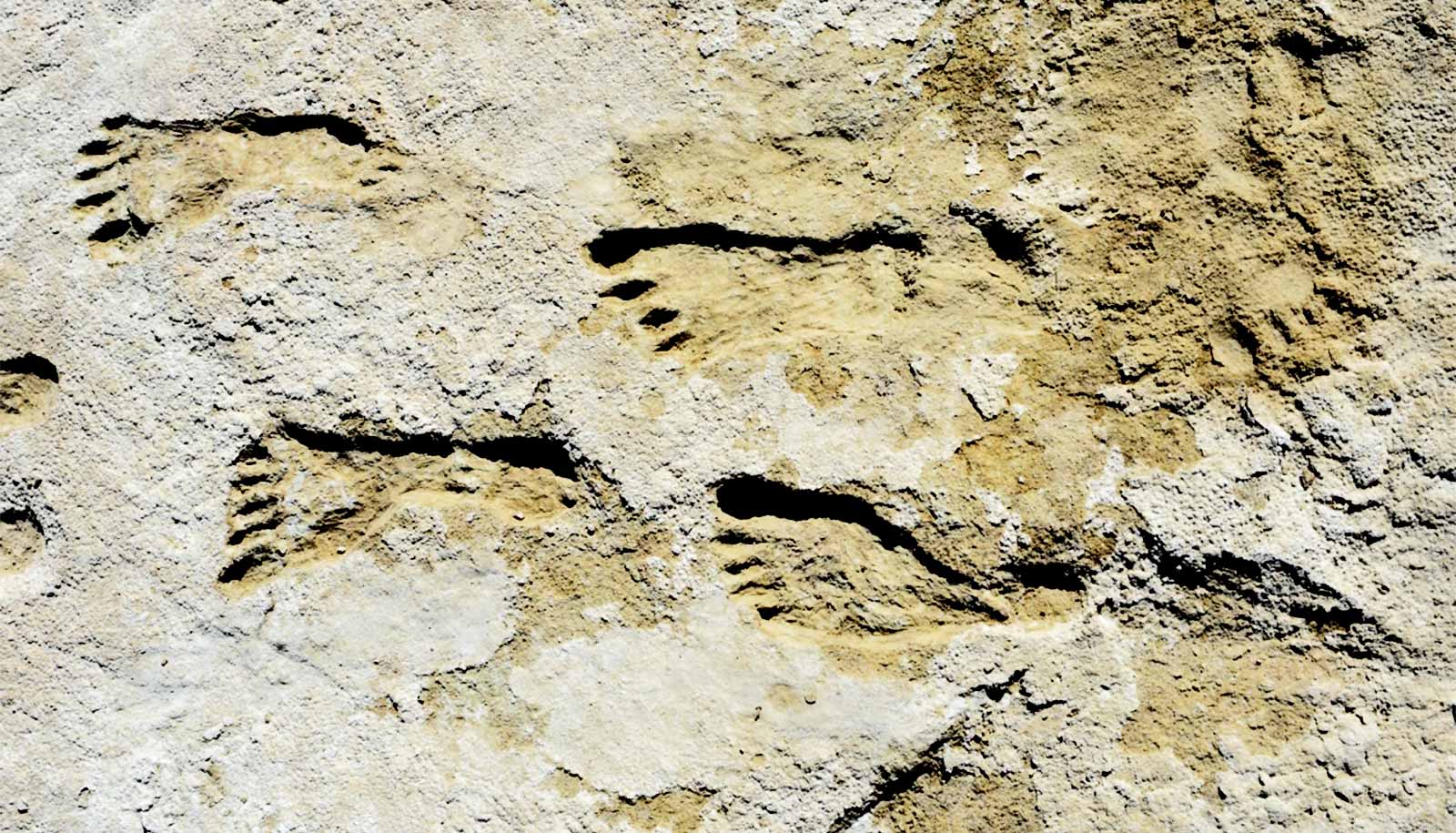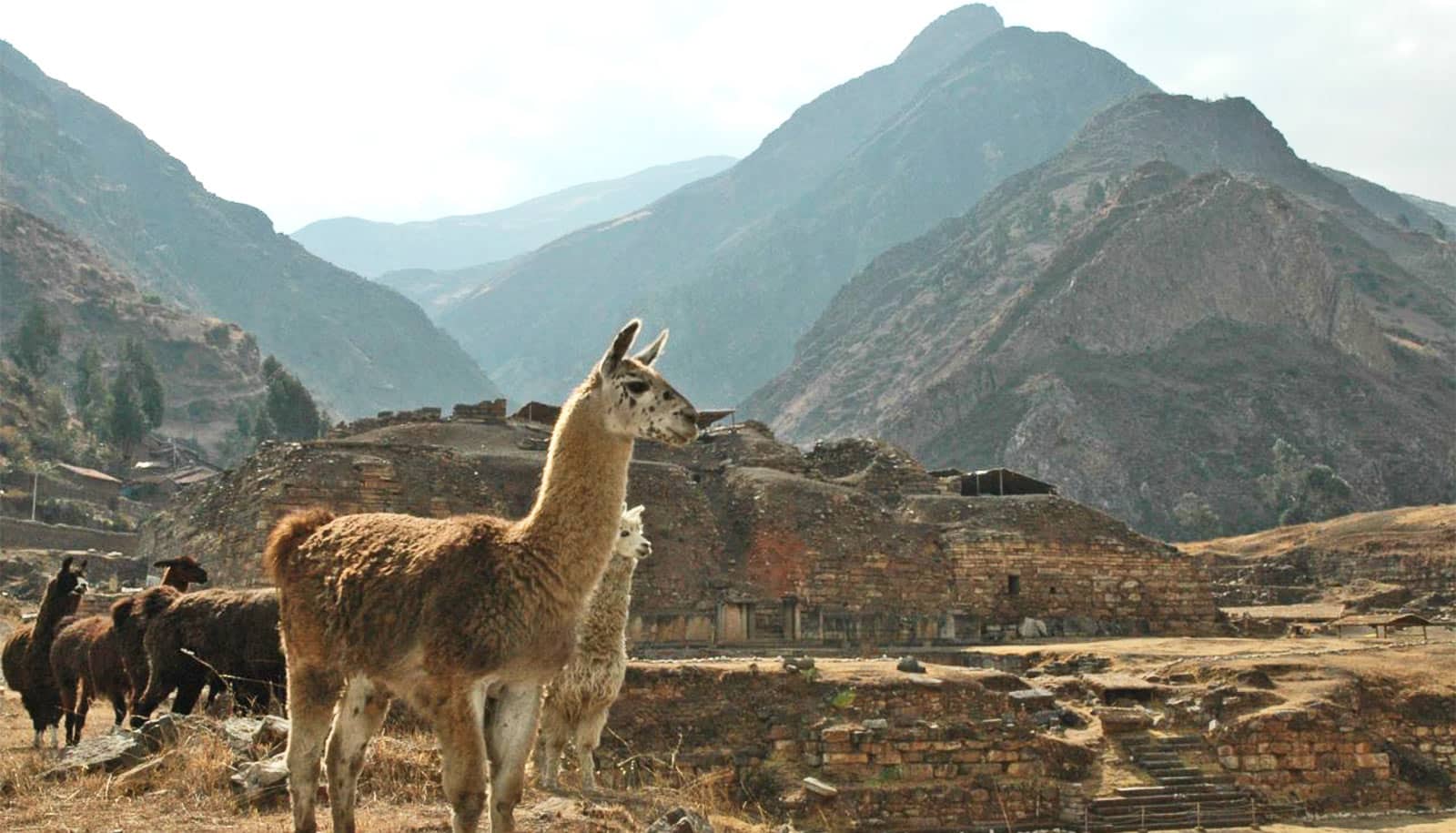Silk Road nomads may have been the “foodies” of the Medieval Ages. New research shows they enjoyed much more diverse diets than did their settled urban counterparts.
“Historians have long thought that urban centers along the Silk Road were cosmopolitan melting pots where culinary and cultural influences from far off places came together, but our research shows that nomadic communities were probably the real movers and shakers of food culture,” says Taylor Hermes of Kiel University, lead author of the study in Scientific Reports.
The study shows how “nomads cross cut regional settings and likely spread new foods and even cuisine along the Silk Roads, more than a thousand years ago.”
Based on an isotopic analysis of human bones exhumed from ancient cemeteries across Central Asia, the study suggests that nomadic groups drew sustenance from a diverse smorgasbord of foods, whereas urban communities seemed stuck with a much more limited and perhaps monotonous menu—a diet often heavy in locally produced cereal grains.
“The ‘Silk Road’ has been generally understood in terms of valuable commodities that moved great distances, but the people themselves were often left out,” Hermes says. “Food patterns are an excellent way to learn about the links between culture and environment, uncovering important human experiences in this great system of connectivity.”
“Pastoralists are stereotypically understood as clinging to a limited diet comprised of nothing but the meat and milk of their livestock,” adds Cheryl Makarewicz, an archaeology professor at Kiel and Hermes’ mentor. “But, this study clearly demonstrates that Silk Road pastoralists, unlike their more urbane counterparts, accessed all kinds of wild and domesticated foodstuffs that made for an unexpectedly diverse diet.”

“This study provides a unique glimpse into the important ways that nomads cross cut regional settings and likely spread new foods and even cuisine along the Silk Roads, more than a thousand years ago,” says study coauthor Michael Frachetti, associate professor of anthropology at Washington University in St. Louis.
“More specifically, this study illustrates the nuanced condition of localism and globalism that defined urban centers of the time, while highlighting the capacity of more mobile communities—such as nomadic herders—to be the essential fiber that fueled social networks and vectors of cultural changes,” Frachetti says.
Bones from new places
For this study, human bones exhumed at archaeological digs in Uzbekistan and Kazakhstan traveled to Kiel University in Germany, where Hermes analyzed them. To be thorough, he also collected previously published isotopic data for the time period to bring together a complete regional picture.
The limits of local environments, food production networks, or cultural mandates may explain why most people within each urban setting had similar diets.
“Prior to this study, there were massive gaps in what we knew about human dietary diversity along the Silk Roads,” Hermes says. “The datasets were simply not there. We were able to greatly increase the geographical coverage, especially by adding samples from Uzbekistan, where many of the important routes and population centers were located.”
The study’s assessment of individual dietary regimens is made possible by studying the isotopic signatures in ancient human bones, allowing the researchers to unlock a trove of information about the food sources, including the proportions and types of plants and animals consumed by individuals over the last decades of life.
Stable isotope analysis is the “gold standard” for tracing ancient diets. Makarewicz, a specialist in the technique, has applied it to understanding major evolutionary transitions from hunting and gathering to agriculture in the Near East.
Hermes, who has worked with Frachetti on archaeological digs across Central Asia for more than a decade, used these isotopic analysis techniques on human bones recovered from about a dozen nomadic and urban burial sites dating from the 2nd to 13th centuries CE.
Dropped seeds from Kazakhstan got us modern apples
The burial sites were associated with a wide range of communities, climates, and geographic locations, including a recently discovered settlement high in the mountains of Uzbekistan, the Otrar Oasis in Kazakhstan, and an urban complex on the lowland plains of Turkmenistan.
Varied diets on the road
While previous archaeological excavations at these sites have confirmed the ancient presence of domesticated crop plants and herd animals, their importance in urban diets was unknown. Isotopic analysis, however, shows how important these foods were over the long-term.
“The advantage of studying human bones is that these tissues reflect multi-year dietary habits of an individual,” Hermes says. “By measuring carbon isotope ratios, we can estimate the percentage of someone’s diet that came from specific categories of plants, such as wheat and barley or millet. Millets have a very distinctive carbon isotope signature, and differing ratios of nitrogen isotopes tell us about whether someone ate a mostly plant-based diet or consumed foods from higher up on the food chain, such as meat and milk from sheep or goats.”
This study discovered interesting dietary differences between urban settlements along the Silk Road, but surprisingly little dietary diversity among individuals living within these communities. The limits of local environments, food production networks, or cultural mandates may explain why most people within each urban setting had similar diets.
‘Food porn’ predates Instagram by at least 500 years
Diets of individual nomads within the same community appear to be much more diverse. These differences, perhaps a function of variable lifetime mobility patterns, the availability of wild or domesticated food options, or personal preferences, suggest that nomadic groups were not as bound by cultural limitations that may have been imposed on urban dwellers, Hermes says.
“Nomads and urbanites had different dietary niches, and this reflects a combination of environment and cultural choices that influenced diet across the Silk Roads,” Hermes says. “While many historians may have assumed that interactions along the Silk Road would have led to the homogenization of culinary practices, our study shows that this was not the case, especially for urban dwellers.”
Hermes, Frachetti, Makarewicz, and their collaborators at the Institute of Archaeology in Samarkand, Uzbekistan, at the look forward to applying these isotopic techniques to new archaeological mysteries across Central Asia.
“We hope our results lead to a paradigm shift in how historical phenomena can be examined through the very people who made these cultural systems possible,” Hermes says. “The results here are exciting, and while not the final word by any means, pave a new way forward in applying scientific methods to the ancient world.”



